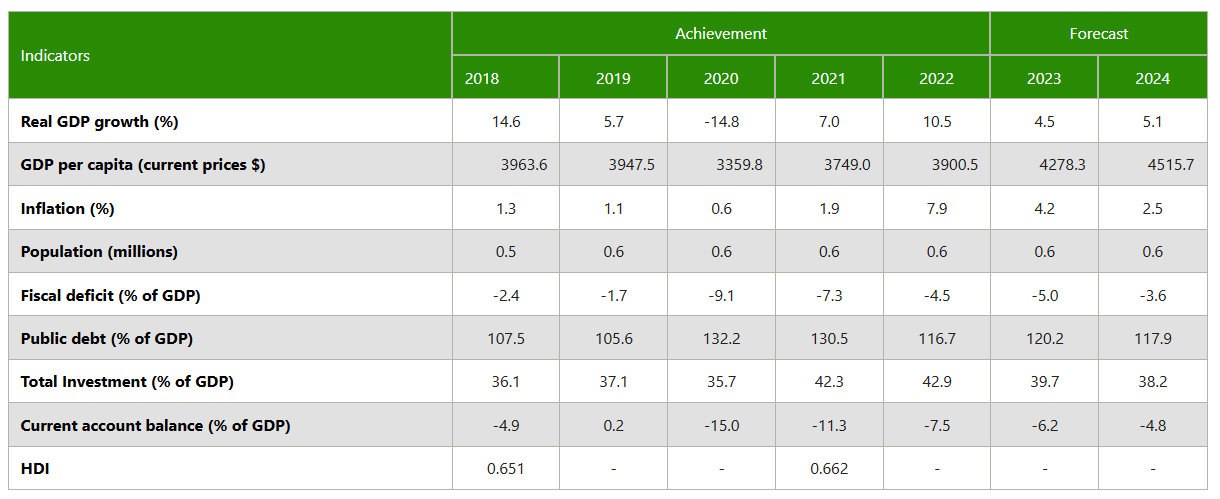
Macroeconomic Performance
Table 1: Overview of some macroeconomic indicators
The Gambia recorded an average growth rate of 4.6 per cent over the last five years. The Gambia’s economy grew by 4.4 per cent, up from 4.3 per cent in 2021. The growth in economic activity was spurred by increased agriculture activity, on the back of an improved rainfall pattern, as well as increased government capital and recurrent expenditures. Average inflation increased to 11.5 per cent, from 7.4 per cent in 2021, due to increased upward pressures on food and non-food prices. The current account balance deteriorated sharply to -15.0 per cent of GDP, from -3.8 per cent of GDP in 2021. Fiscal balance improved markedly to -4.8 per cent of GDP, from -4.6 per cent of GDP in 2021. The debt-to-GDP ratio increased slightly to 84.0 per cent in 2022, compared to 83.5 per cent in 2021.
Outlook
Economic activity is projected to grow by 5.5 per cent in 2023, rising to 6.2 per cent in 2024. Average inflation is projected to increase to 12.3 per cent in 2023 before declining to 8.5 per cent in 2024. Fiscal deficit is projected to improve to 2.7 per cent of GDP in 2023 and further to 2.1 per cent of GDP in 2024, with the current account balance improving marginally to -14.5 per cent in 2023 and further to -11.2 per cent in 2024. Public debt is projected to decline to 73 per cent of GDP in 2023 and further to 68.6 per cent in 2024.
Probable Headwinds
An unfavourable rainfall pattern will lead to poor performance in the agriculture sector. Furthermore, given the price sensitivity of the tourism and reexports sectors, a resurgence in inflation will adversely affect output in those sectors. Given the considerable size of household consumption, high prices will dampen economic growth.

